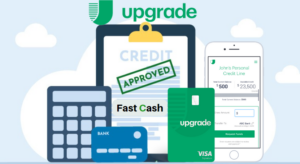This guide will show you the value of loan repayment schedules. Knowing different payment plans makes managing your debt easy. You’ll learn how to handle your finances better. This means less stress about payments and a brighter financial future.
Key Takeaways:
- Loan repayment schedules are essential for efficient debt management.
- Understanding different payment plans is crucial for optimizing your financial situation.
- Implementing effective strategies can help you take control of your financial future.
- By optimizing your loan repayment schedule, you can say goodbye to payment stress.
- Managing your debt efficiently sets you on a path to financial freedom.
Understanding Loan Repayment Terms and Calculations
Before you start planning how to pay back your loan, it’s important to know the basics. Understanding key terms and how calculations work is the first step. With this knowledge, you can make plans that work best for you.
Interest Rates
Interest rates are a big factor in how much your loan will cost. They show the percentage lenders charge you on the loan amount. If the interest rate is high, you’ll pay back more. A lower interest rate means you’ll pay back less overall.
Loan Duration
The loan term, or duration, is how long you have to pay back the loan. It’s usually given in months or years. Loans that take longer to pay off have smaller monthly payments. But, they collect more interest over time. Shorter loans have bigger monthly payments but save you on interest costs.
Interest Calculation Formula for Loans
To figure out your interest payments, there’s a simple formula used:
Interest = Principal x Interest Rate x Time
Here’s what each term means:
- Principal: The amount of money you borrowed at the start.
- Interest Rate: The yearly percentage the lender charges you.
- Time: How long your loan lasts, in years or part of a year.
This formula helps lenders work out your interest. Then, they can set your payment schedule.
With this guide to loan terms and how interest is calculated, you’re ready. You can now look into different ways to pay back your loan.
Types of Loan Repayment Schedules and Their Benefits
Different people need different loan repayment plans. Your financial situation shapes which plan is good for you. Let’s look at three types – fixed-rate, adjustable-rate, and graduated plans. We’ll see what’s good and what might be tricky about each.
Fixed-Rate Repayment Schedule
A common choice is the fixed-rate repayment schedule. Here, your interest rate doesn’t change over time. This means your payments stay the same every month. It’s great for planning your budget. You also avoid surprises from changing interest rates.
Adjustable-Rate Repayment Schedule
The adjustable-rate schedule is different. Your interest can go up or down. It depends on things like the prime rate. While there’s a risk of higher payments, you might pay less when rates fall. But, think about the chance of paying more if rates go up.
Graduated Repayment Schedule
This plan suits those who think they’ll earn more later on. Payments start small and get bigger every couple of years. It’s helpful when you’re making less at the start. But, you’ll likely pay more interest over the loan’s life.
Choosing the right repayment schedule matters. Think about what you want and your job stability. Each plan has its ups and downs. Talking to financial experts can help pick the right path for a debt-free future.
Using a Repayment Calculator to Plan Your Payments
A repayment calculator helps manage your loan payments effectively. It lets you figure out your monthly payment amount. You can also see how to save on interest and plan payments that meet your budget.
To start, you enter details like loan amount, interest rate, and term into the calculator. Then, it shows your monthly payments and how they’re split between principal and interest.
This tool makes it easy to test different payment options for your budget. By changing the loan term or adding extra monthly payments, you can see how it affects your repayment time and interest costs.
Using a repayment calculator shows the effect of changing your monthly payments. It helps you see what’s affordable for you. This way, you can match your payments with your financial goals.
It also explains how interest builds up over time. Looking at the schedule of interest and principal payments, you can find ways to reduce total interest. This helps in paying off debt faster.
The main goal is to find out your monthly payment with a repayment calculator. But, it also helps you make a smart payment plan. By trying different payment amounts and terms, you can tailor your plan to your finances.
With a repayment calculator, you can take charge of your loan payments. It helps you reach your financial goals in a smarter way.
Creating an Amortization Schedule for Long-Term Loans
Long-term loans, like mortgages, need smart planning for on-time payments and to keep interest costs low. This schedule breaks down your loan payments into principal and interest components over time, providing a clear roadmap for repayment. An amortization schedule is a key tool for this.
Creating an amortization schedule lets you see how payments lower your principal and cover interest. This knowledge helps you make smart money choices. It keeps you on track to pay off your loan at a steady pace.
Making extra payments on your loan is also beneficial. Paying more towards the principal cuts down the balance quicker. This action can greatly decrease the total interest paid over the life of the loan.
An amortization schedule shows how extra payments can shorten the loan term and lessen interest costs. You can make extra payments monthly, yearly, or when you have extra cash. The schedule shows the benefits of these additional payments.
Before making extra payments, check your loan agreement. Some lenders might charge fees for early repayment. Knowing your loan’s terms ensures there are no surprises.
To sum up, an amortization schedule is crucial for managing long-term loans. It clarifies how payments are split between principal and interest. It also shows the advantages of extra payments. With this tool, you can better plan your loan repayment and save on interest.
Strategies for Paying Off Your Loan Faster
If you’re looking to save on interest and be debt-free sooner, paying off your loan faster is wise. Additional payments can speed up your repayment. A loan payoff calculator is a handy tool in this process.
This calculator helps you figure out how much you’ll save by paying extra. It looks at your loan balance, interest rate, and how long you have to pay. It gives you a clear savings projection. With it, you can plan out how to finish paying your loan early.
Let’s dive into some strategies and tips for quicker loan repayment:
- Increase your monthly payments: Paying more each month speeds up repayment and cuts down on interest. The loan payoff calculator shows how this lowers your loan’s overall cost.
- Make bi-weekly payments: Splitting your payment into two parts each month means one extra payment a year. This trick can help pay off your loan faster.
- Allocate windfalls and bonuses: Use unexpected money for your loan. The calculator helps you see how these extra payments decrease your balance and save money.
- Refinance your loan: Refinancing might get you a lower interest rate, saving money long-term. The calculator helps you weigh the benefits of refinancing.
Use these strategies and the loan payoff calculator to free yourself of loans sooner. Every extra payment helps. Stay focused on your goal for financial freedom. Now, check out this table showing how quick repayment can save money.
| Loan Amount | Interest Rate | Loan Term | Monthly Payment | Total Interest Paid (Standard Schedule) | Total Interest Paid (Accelerated Repayment) | Interest Saved |
|---|---|---|---|---|---|---|
| $50,000 | 5% | 5 years | $943.34 | $7,600.59 | $4,722.54 | $2,878.05 |
| $100,000 | 4% | 10 years | $1,036.38 | $24,765.68 | $14,364.68 | $10,401.00 |
| $200,000 | 3.5% | 15 years | $1,430.35 | $80,263.29 | $47,282.21 | $32,981.08 |
The table shows how you can save on interest by paying loans off faster. You not only pay less in total interest but also save a lot overall. Using a loan payoff calculator helps you find the best payment strategy for you.
Managing Loan Repayment Difficulties and Options
Sometimes, unexpected financial challenges arise. It might become tough to keep up with loan payments. Addressing these issues quickly can save you from negative impacts. Here, we’ll talk about several strategies to manage repayment challenges while keeping your credit score safe. We will look into three main solutions:
1. Loan Deferment
Loan deferment lets borrowers pause their loan payments temporarily. This is usually for specific reasons like returning to school or economic hardship. Interest might still add up during this time. Knowing the terms is key. Deferment offers a break, helping you stabilize your finances.
2. Forbearance
Forbearance could also help if making payments is tough. Your lender might let you pay less or stop payments for a bit. This is for short-term money problems. Remember, interest could keep growing, making what you owe larger. Talking to your lender will clarify if this is a good move for you.
3. Refinancing
Feeling stuck with many loans or high interest rates? Refinancing might help. This means replacing old debts with a new loan, with better terms. It could lower your payments or interest, or shorten the loan time. Check costs carefully to make sure it fits your financial plans.
Every situation is different, so the best choice changes. Talk with your lender about what you’re facing and see what’s possible. Acting early can help fix repayment concerns. This way, you can improve your money situation for the future.
The Importance of Sticking to Your Payment Schedule
Consistency is key when it comes to loan repayment. By sticking to your payment schedule, you can keep your finances under control. If you miss payments or don’t follow your plan, you could face late fees and harm your credit score.
Using a payment schedule calculator is a smart move. It tells you the exact amount to pay each month. Just enter your loan info like interest rate and how long you have to pay it back. You can then plan your budget without any surprises.
This tool helps you see your loan payoff progress. It gives you a clear picture which keeps you motivated. Seeing the positive impact of regular payments can boost your determination.
It also guides your financial choices. By adjusting your monthly payments in the calculator, you can test different repayment strategies. This shows you how extra payments can speed up your loan payoff and cut down on interest. So, you can pick the best plan for your needs.
“A payment schedule calculator is an essential tool for managing your loan. It makes sure you keep up, helps you make wise choices, and optimizes your repayment route.”
Committing to your payment plan with the help of a payment schedule calculator fosters good financial health. It’s about making a promise to yourself for a stable financial future.
Maximizing Interest Savings through Debt Repayment Strategies
Regular payments are vital for loan repayment. But, you can do more to save on interest. By using certain strategies, you can pay off debt faster and save more money.
Debt Snowball Method
The debt snowball method helps tackle multiple debts efficiently. Start by paying off your smallest debt while keeping up with minimum payments on others. After the smallest debt is cleared, use those funds for the next smallest debt. This method boosts morale by showing quick wins and helps tackle larger debts gradually.
“By starting with the smallest debt and gradually eliminating each one, the debt snowball method motivates individuals to stay focused on their financial goals.” – Dave Ramsey
Debt Avalanche Method
The debt avalanche method targets debts with the highest interest rates first. You pay extra towards these debts while maintaining minimum payments on others. Once the debt with the highest rate is gone, move to the next. This strategy reduces the total interest you pay, leading to big savings.
Combining Strategies
Some people mix the snowball and avalanche methods. They tackle debts small in size but high in interest first. This way, they enjoy the psychological benefits of the snowball method while saving on interest. It’s a flexible, effective way to pay off debts.
Implementing these strategies takes planning and self-discipline. Assess your finances to pick the right strategy. Then, lay out a detailed repayment plan. Whether you go for the snowball, avalanche, or a mix, sticking to your plan is key to becoming debt-free.
Using these debt repayment strategies does more than just free you from debt sooner. It puts you in charge of your financial future. With these tried and true methods, you can better manage your loans and achieve your financial dreams faster.
Conclusion
Getting a handle on loan repayments is key to controlling your debt and sorting out your money matters. This guide has shown you how to tweak your payment plans to ease the stress of repayments.
Begin using these tips now and start your journey to becoming debt-free. Understanding your loan terms and knowing how to figure out payments and interest can lead to smarter choices.
Using repayment calculators lets you set up payment plans and schedules that work for you. Thinking about quicker ways to pay off your loan, such as extra payments, can cut down the interest you owe.
Sticking to your payment plan is important to avoid fallout. And remember, if you hit a snag, you have options. These include putting off payments, temp breaks, or reshaping your loan. By engaging with these tips and focusing on cutting interest costs with methods like debt snowball or avalanche, you can dominate your debt. This leads to a future with better financial health.












